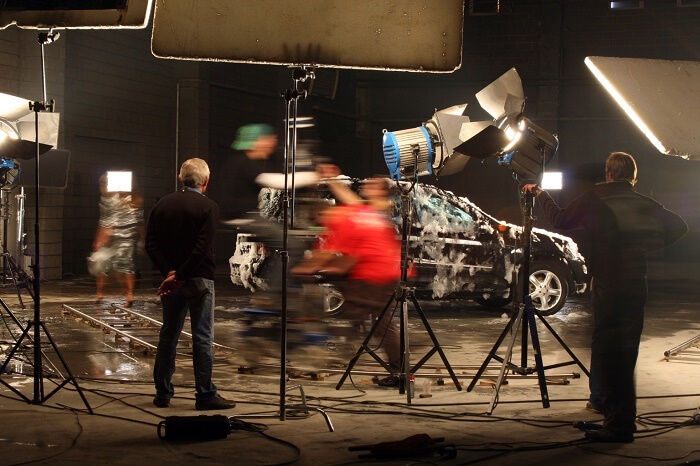So, you got that part in the upcoming film. Or maybe there is a big audition coming up that you need to prepare for. Better yet, you may just want to impress your friends. Either way, your goal calls for a believable Australian accent to be conveyed. But, you do not know how to do an Australian accent.
Learning any accent can be intimidating and even as difficult as learning a new language. However, if you really work at it, it can give you an edge in an audition. It can even open doors to other roles that need someone skilled at using an Australian accent. Within this article you will find many helpful tips that will get you going on your way to reaching a perfect Australian accent.

11 Tips on How to Do an Australian Accent
1. Ignore the Cliché
We have all heard a typical Australian accent in movies such as Crocodile Dundee. They all seem very similar and rough. Though for some regions there is some truth in that accent. However, you do not have to be so bold.
Instead, when learning how to do an Australian accent, opt for a more subtle approach. Learn the ins and outs that make your accent not only believable but accurate as well. Cliché phrases such as, Crikey, or Throw another shrimp on the barbie, will likely get you more eye rolls than parts.
2. Say Goodbye to the Letter R
Well, do not completely say goodbye. The letter R, when used with an Australian accent, is dropped or some say softened if it as the end of a word. For example, in the word car, the R loses its hard sound and will instead use a softer ah ending. Thus, the new pronunciation will be cah.
This simple step is key in figuring out how to do an Australian accent. Oddly enough, it is also a good first step in learning to speak like a New Englander too. This part of learning the accent can even become addicting. You may even realize you are thinking about the words and how they should be pronounced before you utter them.
3. Shorten Everything You Can
When learning how to do an Australian accent you may realize that a good portion of the language has been shortened. When learning how to do an Australian accent, words are shortened to the bare minimum. Longer words like afternoon get chopped and you have the word arvo instead. So instead of saying, What do you guys got going on this afternoon? You will say, What d,yous got goin’ on this arvo?
Another typical type of word shortening you will see is using and ie at the end of any word. Some examples are: breakfast becomes brekkie, sunglasses will become sunnies, etc.
4. Diphthong- Use it
I know, I know, it sounds like we are talking about underwear or something to dip chips in. I assure you we are not. A diphthong is actually something that has to do with the phonetics of a sound. It is when 2 vowels smash together into one singular sound.
The most commonly used diphthongs you will come across while learning how to do an Australian accent is used for the letter I. In the United States, this letter sounds like eye. However, when used in conjunction with an Australian accent, the letter I takes on a marriage of two sounds including oh and ee. The result is a sound that comes across as aw-Ee. Get this particular language nuance down and you will be one big step closer to sounding like you are from down undah.

5. Listen
When learning any accent, it is extremely helpful to take the time to listen to a native speaker. Watch films that feature the accent you are emulating and really pay attention to the shapes their mouth make as they pronounce the words. Pick up on any repetitive sounds and words, especially within the vowels. Learn from them.
Not all Australian accents have to be animated and messy. Most accents you hear will be much smoother and mellow. Australia was inhabited by colonists from the Southern parts of England. Thus, you may see some similarities between Australian and Cockney accents. You can also listen to webcasts and on the street interviews to get a really good listen to some natural and raw accents.
6. Go with the Flow
Try to keep your accent running smoothly like a river that streams long, constant, and steady. Think of your sentence as one really long word.
Australian accents are much less rhythmic than other accents and require an even flowing sound.
7. Change Your Inflection
Ask yourself a question out loud. Do you hear how there is a slight raise in your tone towards the end? You may notice this happen during normal sentences when you use an Australian accent. It is sometimes called the Australian Question Inflection. However, instead of just being a louder and slightly higher sound found at the end of a question, you can hear it in every day speech.
8. Use as to End Your Sentence
Many Australian speakers will use as at the end of a sentence to add emphasis to what they are saying. For example, This pizza is great as. While an American speaker will finish the thought, and Australian speaker will leave it open ended.
9. College Studies
Though not an option financially for all, a trip abroad will really immerse you in the language and culture you are trying to imitate. When learning how to do an Australian accent, immersion is the greatest way to reflect a nation’s culture. You may find yourself naturally using an accent by the end of your trip.
Australia is a very popular destination for students from America to study abroad. This is usually done during your college years with your junior year being ideal. There is a strong alliance between the US and Australia. So it is typically pretty easy to obtain the necessary clearance to spend a semester, or even a year, to study in Australia. If you want to start even earlier in your schooling career, you can apply to be a foreign exchange student during your high school years.
10. Work Visa
If you are between 18 and 30, you can also get a work visa to spend a year working and residing in the country. You do not need sponsorship. But if you have a university degree, you are more likely to appeal to specific companies or receive approval to work a specific job. It is easy to apply, just use the online forms to be considered. Australia has some breathtaking scenery and amazing places to work. So you may never want to leave.
This is especially true if you are a nature lover. You can apply to volunteer and take advantage of the opportunities available. There are many conservation areas that you can apply to so that you can work to preserve nature and work with animals. From a few weeks to a few months, there are a variety of prospects available for volunteers to take benefit from.

11. Practice, Practice, Practice
Step out in public to test out your new accent. Stop at a local restaurant or coffee shop that you may not frequent often. Try out your Australian accent on the unsuspecting wait staff. If it is convincing, someone may ask you where you are from. If your accent needs some work, you may see a confused or unconvinced look from your server. You can let them in on the fun or keep your practice time going. Either way you will get either some great practice time in or some constructive criticism.
Another way to practice is to repeat sentences while you are watching a film or interview that features a native speaker. You can even record yourself and play it back. This way you can better compare your accent to the speaker and see where you need to adjust. You can also use this technique by recording yourself reading a book in your accent. Replay your recording to be able to critique yourself.
Wrapping Up
Learning any accent can be a daunting task, especially if you have a deadline. Regardless of the reason you want to imitate an accent, it takes practice. Remove all preconceived notions you have learned from watching scenes that represent stereotypical examples. If at all possible, get a total immersion experience by visiting the country and getting involved in the culture through all aspects of your life. Even if a trip is not an option in your situation, you can still observe. Also, listen to recordings, films, and interviews in order to really study the accent. Using these tips and techniques can show you how to do an Australian accent in no time.
Have you ever gone down under to study or work? How did you develop your accent accurately? Do you have more tips or experiences to share? Please feel free to leave helpful comments for others who may be looking to develop their own accents.
The images are from depositphotos.com.